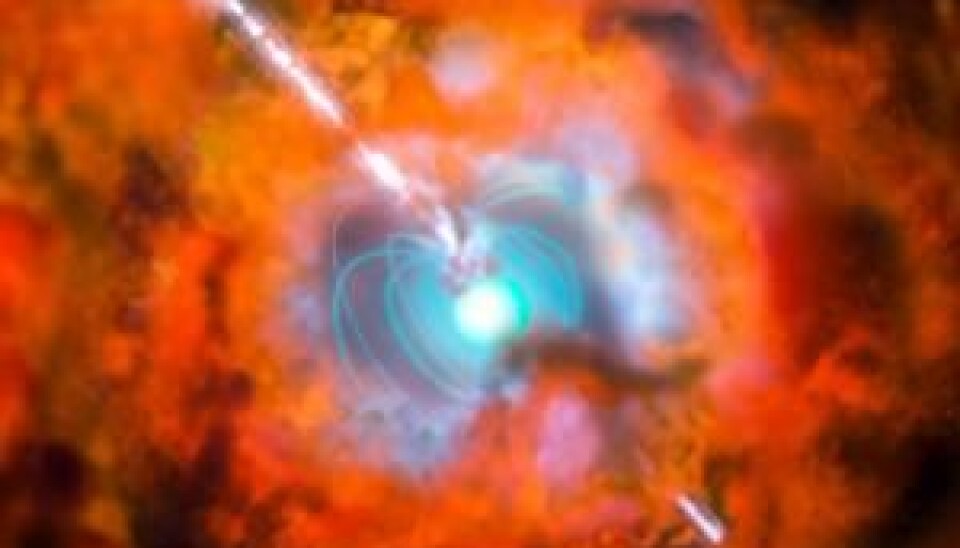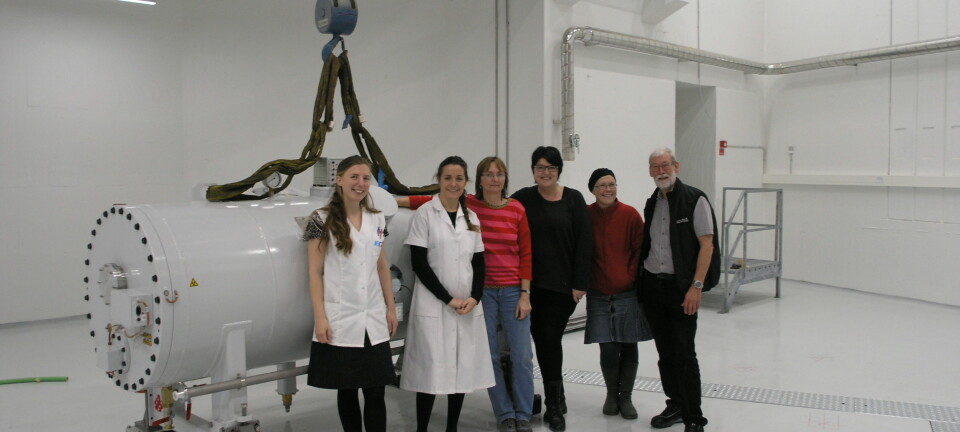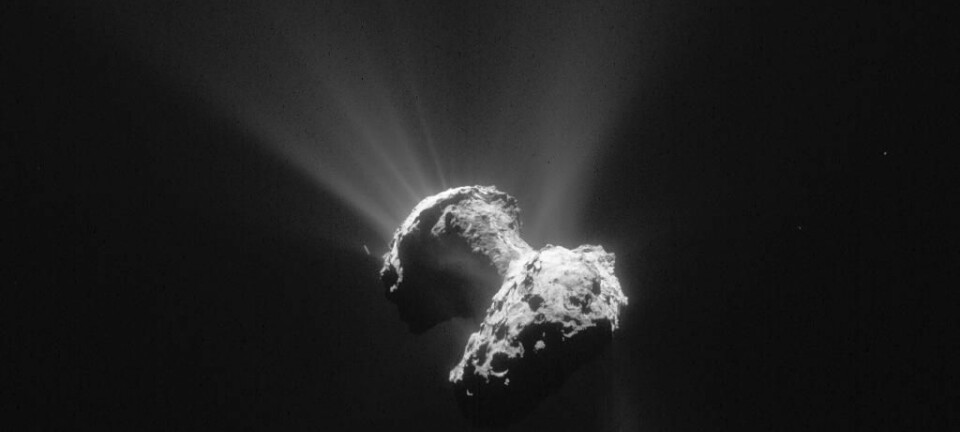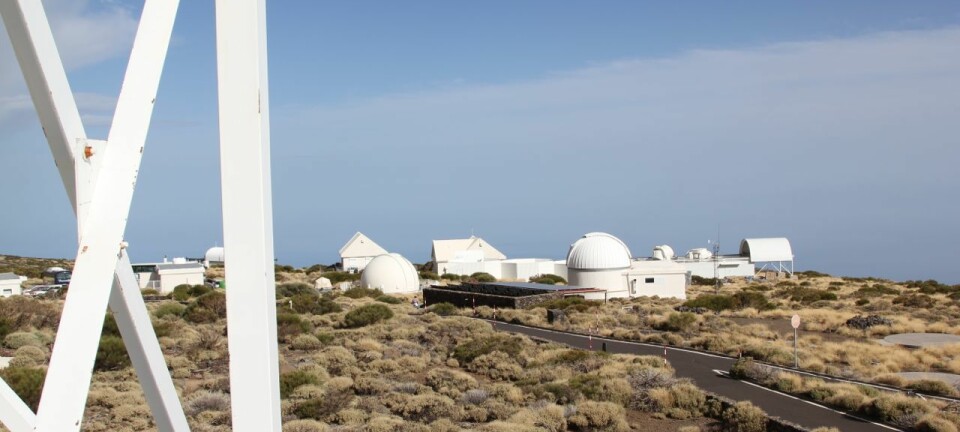
Gigantic supernova explains mysterious gamma-ray burst
6.4 billion years ago, a dying star finally exploded as a huge supernova, releasing energy as gamma rays in a violent reaction.
An international team of researchers has found a 6.4 billion year old gamma-ray burst that lasted for seven hours, associated with a powerful supernova explosion.
Gamma-ray bursts are powerful bursts of energy -- the most energetic form of electromagnetic radiation that the universe has to offer -- and require exceptional circumstances in order to form, especially if they last a long time.
Now scientists believe that the gamma rays emitted by one particular supernova explosion were so intense that they made the star’s death about 15 times as bright as would otherwise have been expected.
It is the first study to link a long gamma-ray burst to a supernova explosion. The discovery is described in an article in the scientific journal Nature.
Magnetic field provided extra energy

The supernova occurred when a rapidly rotating giant star collapsed, transforming its core into an ultra-dense neutron star with a radius of about 10 kilometres and a mass greater than that of the Sun.
When the interior of the star collapsed under its own weight, it began to rotate ever faster -- the same technique used by ice-skaters and dancers when they pull their arms in close to their body to allow them to pirouette faster. In this way, the neutron star rotates many times per second, increasing its magnetic field during the process.
According to one of the scientists involved in the study, Professor Johan Fynbo from the Niels Bohr Institute at the University of Copenhagen, Denmark, this strong magnetic field meant that the explosion had extra energy.
"Supernovae explosions are already extreme, but those that emit gamma-ray bursts are even more extreme. Usually, the energy of the supernovae comes from radioactive materials, particularly nickel. But here we identified a so-called magnetar -- a neutron star with an extremely powerful magnetic field," says Fynbo.
'The matter surrounding the magnetar is dragged around by the rapidly rotating neturon star, and some of the energy in the rotation is transferred to this matter, creating a very powerful magnetic field. In this way, the supernova had a lot of extra energy and so was very bright," he says.
Rotating at 83 revolutions per second
A powerful gamma-ray burst typically lasts only a few seconds or minutes, but the bursts that reached NASA’s Swift satellite on December 9, 2011, lasted for up to seven hours. The long duration of this burst is explained by the scientists’ magnetar model.
Their measurements confirmed that the extra energy came from a neutron star which was rotating very quickly -- each revolution taking just 12 thousandths of a second. According to the scientists, the star must have had an extremely strong magnetic field of somewhere between 600 and 900 billion gauss -- a magnetic field that is roughly a million billion times as strong as Earth's.
Using special instruments on ground-based telescopes, the scientists successfully captured the afterglow of the gamma-ray burst. These measurements allowed them to link the gamma-ray burst to the supernova explosion, and conclude that the supernova was probably a result of a collapsed giant star, which then became a magnetar.
Lengthy glimpses of gamma-ray bursts are rare
Prolonged gamma-ray bursts are rare events and occur on average, perhaps only once a year. Short gamma-ray bursts are however observed much more often, and scientists estimate that most of them come from giant stars that explode as supernovae and end up as black holes.
"In a normal gamma-ray burst the energy comes from the gravitational collapse of a giant star, which is transformed into a black hole. Here, the typical time scale of the burst is a matter of seconds -- perhaps up to 10 seconds. So we need another explanation for what causes the prolonged gamma-ray bursts observed here," says Fynbo.
According to Fynbo, it is also possible for the shortest bursts to originate from the collision of two neutron stars or a black hole and a neutron star. This too can create a rapidly rotating compact object, which is required for a gamma-ray burst to take place.
Was the star once a blue super giant?
The prolonged gamma-ray burst, named GRB 111209A, was previously examined by another team of scientists who came to the conclusion that it had to have originated from a type of huge star known as a blue super giant. These results appeared in The Astrophysical Journal in 2013.
This earlier group of scientists did not think that the gamma-ray burst could have been produced by a magnetar. But according to astrophysicist Bruce Gendre from the University of the Virgin Islands USA -- one of the authors on this previous study -- this does not mean that the new results are wrong.
"In our initial paper, we ruled out the possibility for a magnetar to fuel the entire gamma-ray burst, for a very simple reason: In such a case, the
initial spin would be so fast that the neutron star would explode due to the centrifuge force. This still holds. However, nothing prevents the
core of the star to form a magnetar that would provide some extra-energy for the supernova emission," says Gendre.
In any case, it was at least a giant star
Scientists none-the-less agree that an exploding giant star gave rise to the gamma-ray burst, and Gendre sees the new results as offering constraints to his earlier model.
An explosion of a giant star as a supernova may have produced the gamma-ray burst, and then the magnetar -- the remains of the star -- could have supplied energy to the afterglow, which according to Gendre, may be what Fynbo observed.
"This would even open a new question for stellar physics: how is it possible for a very massive star not to form a black hole but a neutron
star? In my mind, this is the key question that would explain the difference between massive stars producing gamma ray bursts and the ones that only produce supernovae," says Gendre.
As scientists wait to answer such questions, many more gamma-ray bursts are being registered that may be associated with supernova explosions. The hope is that this will provide an even better understanding of the mechanisms of the wildest bursts of energy that the Universe has to offer.
--------------
Read the Danish version of this article on Videnskab.dk
Translated by: Catherine Jex
Scientific links
- A very luminous magnetar-powered supernova associated with an ultra-long gamma-ray burst. Nature, 2015, doi:10.1038/nature14579
- The Ultra-long Gamma-Ray Burst 111209A: The Collapse of a Blue Supergiant? The Astrophysical Journal, 2013, doi::10.1088/0004-637X/766/1/30









